This article originally appeared in Lucky Peach Magazine.
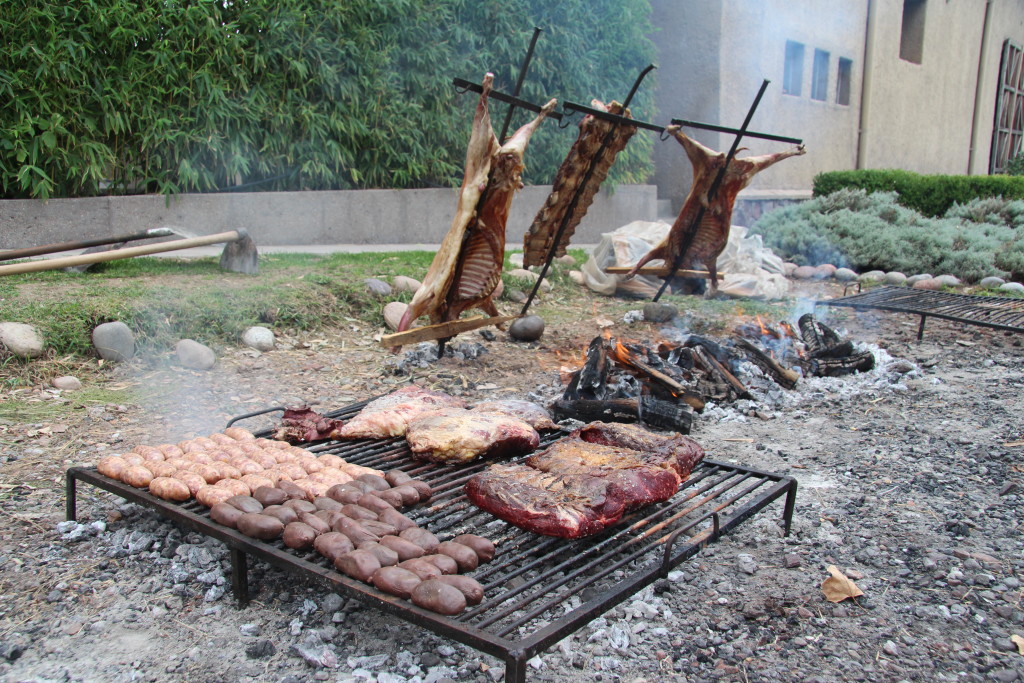
If where there’s smoke there’s fire, then in Argentina, where there’s fire, there’s a dismembered cow slowly grilling over hot coals. Asado isn’t just a barbecue, or a cultural tradition, it’s a main source of national pride and worshipped high on a majestic meat pedestal alongside fútbol, Messi, and the Pope.
There’s a little vocabulary you’ll need to have a handle on before delving into the world of the Argentine grill: Parrilla is pronounced pa-ree-sha or pa-ree-ja (the double “l” makes a “sh” or “j” sound) and translates to “grill” (the cooking device) or “steakhouse,” depending on the context; Asado means both “barbecue” (the event) and a cut of meat (short and spare ribs); Asador refers to the “grill master,” who is also known as the “parrillero” and al asador or asador criollo is a sub-style of barbecuing vertically on an iron cross over an open flame.
The Parrilla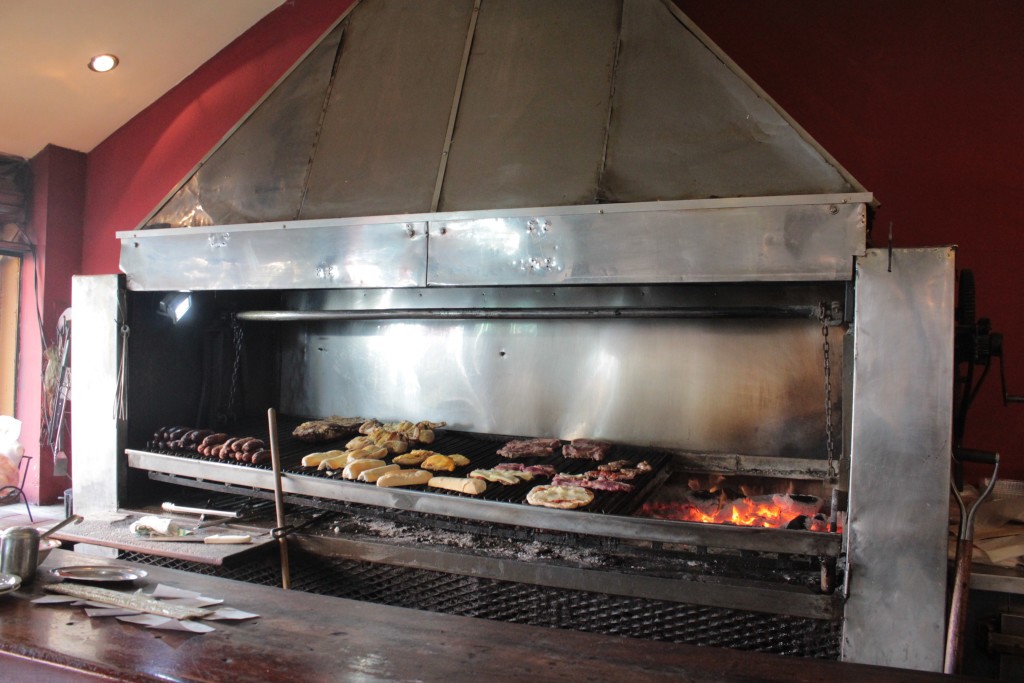
The parrilla is the grandmaster of all grilling devices, an extraordinary tool that captures the primal essence of cooking meat with just salt and fire. Ten years ago when I arrived in Argentina, I ate my first asado off of a rusty grill balanced on a wheel-less wheelbarrow filled with coal and newspaper. It was then I quickly learned an important asado lesson: there is always a way to MacGyver the hell out of any apparatus and transform it into a makeshift grill. Since, I’ve eaten hundreds of barbecues, some prepared al asador—crucified Gaucho-style over an open-flame pit—and others in fireplaces, oil drums, shopping carts, metal rods, or even a simple rounded grill grate atop four bricks.
Parrillas in Argentina come in all shapes and sizes, but the most common two-part design consists of a main V-shape grill with a brasero (firebox) on the side. The brasero is loaded with firewood (like white or red quebracho wood) and/or carbón (charcoal). Once the fire is ablaze and glowing embers fall to the bottom, the hot coals are transferred and spread out under the main grilling area. Above, the grate grooves form a V-shape, and tilt on a slight decline guiding the excess juices to an attached trough, which causes any unwanted grease to drip downward, preventing flare-ups. Many parrillas are equipped with a crank and chains that adjust the height, essential for properly regulating temperature.
Hot tip: Instead of lighter fluid, which isn’t used in Argentina, some parrilleros take a stale piece of bread, soak it in alcohol, place it in the firebox, cover it in charcoal, and light it. That said, many grill masters oppose adding any kind of flammable liquid, and believe the art of starting the fire is an important part of the asado ritual.
THE FIRST ROUND OF MEAT:
¡LAS ACHURAS! // THE OFFAL
In Argentina, there’s a strict no-part-of-the-cow-is-left-behind policy, and the internal organ delicacies, along with sausages, take the lead as the first meat course at the table.
CHINCHULINES// CHITTERLINGS (SMALL INTESTINE)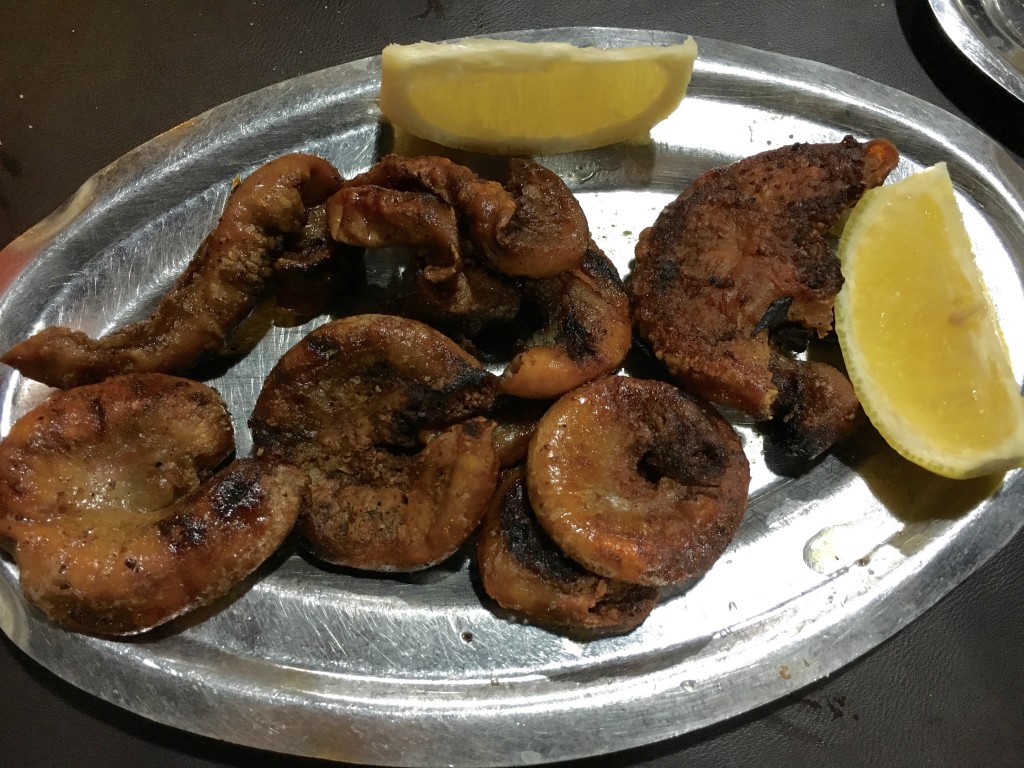
The Lowdown: The controversial part has devout followers and sworn enemies. The memory of a good chinchu dances on your tongue for days; bad versions leave a very literal taste in your mouth. I like when they’ve been soaked in water, vinegar, or lemon juice to purify, then boiled in water and/or milk to render them more tender. Some grill guys will cut the chitlins in pieces, others cook it trenzado (braided), and a few might inject a garlic and parsley stuffing. Then on the grill they go, scorched on high heat just until each side is slightly burnt. The result: a crunchy almost carbonized exterior that explodes with the first bite. Serve with salt, lemon, and an open mind.
MOLLEJA // SWEETBREAD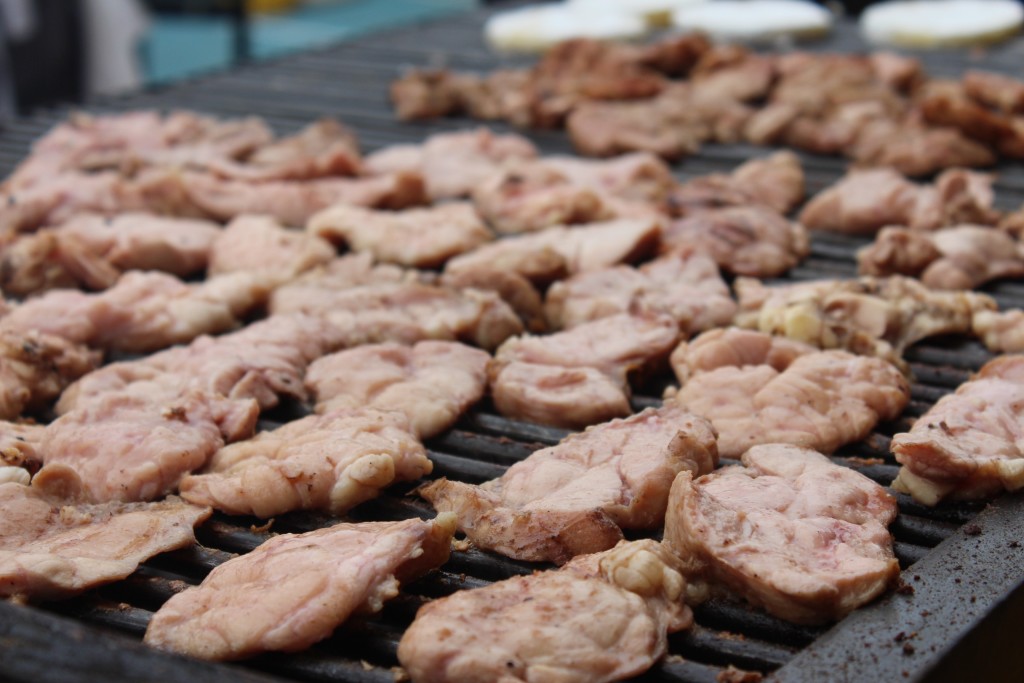
The Lowdown: The caviar of the grill. Sweetbreads de cuello (“neck”) or corazón (“heart”), come from the thymus gland in the neck or the pancreas of a young animal, respectively. Some mollejasare first soaked overnight in cold water or milk and then blanched in boiling water, while others are precooked on the grill, and then returned to the parrilla until an ultra-crispy, golden brown crust forms. The texture should be crunchy on the outside, but tender and creamy within. To serve: Douse in lemon juice, sprinkle with salt, and whisper sweet nothings in its ear.
RIÑÓN // KIDNEY
The Lowdown: Your abuelo’s favorite organ meat, if your grandfather was an old Argentine man. The kidney first needs to be cleaned thoroughly, so it’s usually soaked in water, vinegar, or lemon juice. Some parrilleros keep the kidney whole, others remove the outer membrane, and a few slice it in half or into smaller pieces. Then, it’s grilled on high heat until an outer crust forms but the middle is still soft. Hot tip: the kidney can fall apart easily, so handle with care. Serve with salt and lemon.
MORCILLA // BLOOD SAUSAGE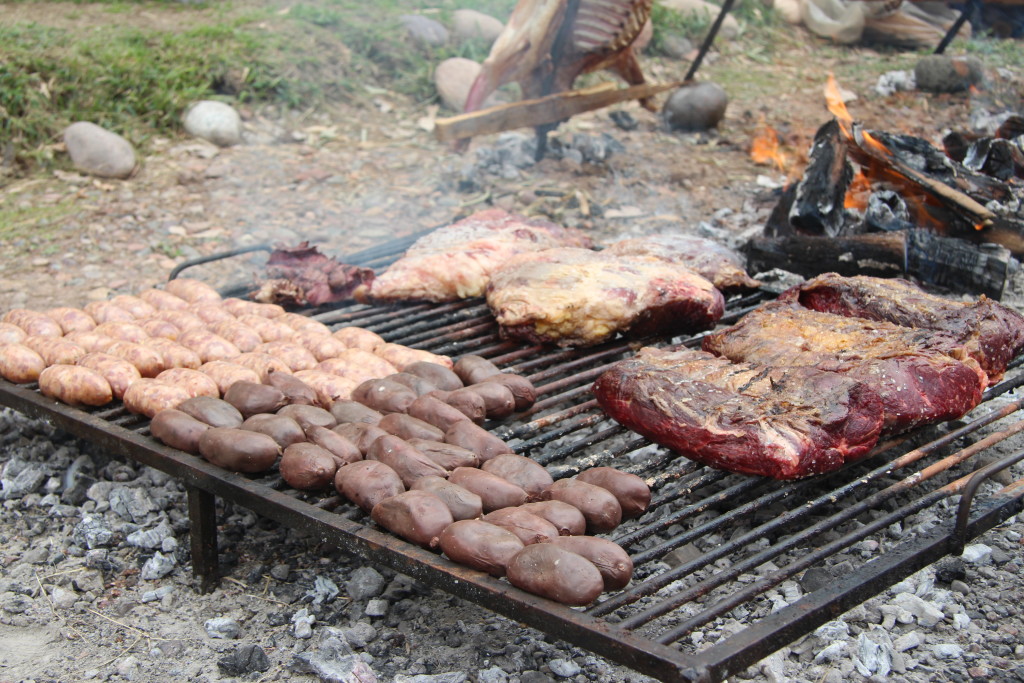
The Lowdown: I can think of at least a dozen Argentines whose first solid food was morcilla. Every morcilla is made differently, but most of the savory versions are seasoned with salt, pepper, garlic, onion, cinnamon, and paprika, while the morcilla vasca or dulce can be made with cloves, raisins, and nuts. Since the morcilla is precooked in natural casings, it’s placed on the grill only to warm through. To serve: Eat it plain or spread on bread like a pâté sandwich (which is then called “morcipán”).
PROVOLETA
The Lowdown: You know the best part of a grilled cheese sandwich when the cheese caramelizes on the bottom of the pan? Well, that’s basically provoleta, a disc of pulled-curd semi-hard provolone that is grilled until it forms a thick crispy exterior crust. It’s either cooked directly on the grill or in a provoletera, a ceramic or cast iron skillet made especially for this part of the Argentine grill experience. The end result is a golden brown shell sheltering gooey queso goodness. To serve: Sprinkle with oregano, red pepper flakes, and a drizzle of olive oil. Vegetarians, stake your claim, because this is one of the only foods at the asado you’ll be able to eat.
CHORIZO // ARGENTINE SAUSAGE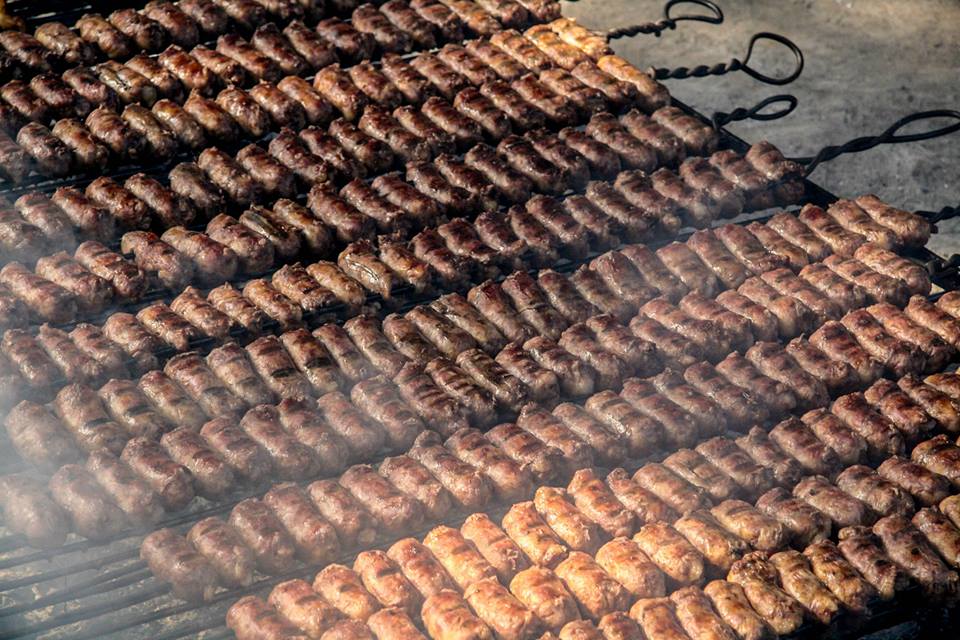
The Lowdown: An asado isn’t legit unless chorizo makes an appearance. The Argentine style is often made with fresh and fatty pork, sometimes beef (or a combination of the two), and light seasonings like paprika, pepper, dried oregano, and garlic. The links are first soaked for a few minutes in water, and then slapped over the hot coals and grilled until slightly charred on the outside and still juicy within. Since the chorizo contains a lot of fat, it’s almost impossible for it to overcook and dry out. To serve: Perhaps the most glorious and simple sandwich ever invented, the choripán consists of a sausage “chori”, bread “pan”, and a healthy dousing of chimichurri sauce. Total marriage material.
SALCHICHA PARRILLERA // ARGENTINE BARBECUE HOT DOG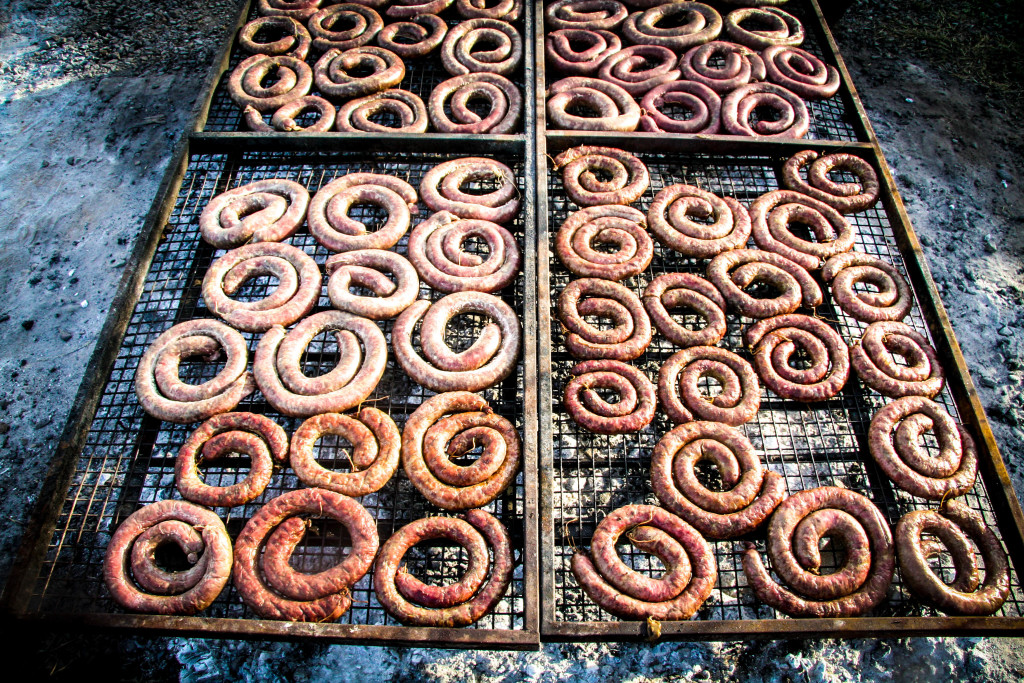
The Lowdown: A close relative to the chorizo, the salchicha parrillera is pretty much the same as the chorizo except it’s longer, thinner, and comes coiled. To serve: Smother in chimichurri and/or salsa criolla.
THE MAIN SHOW: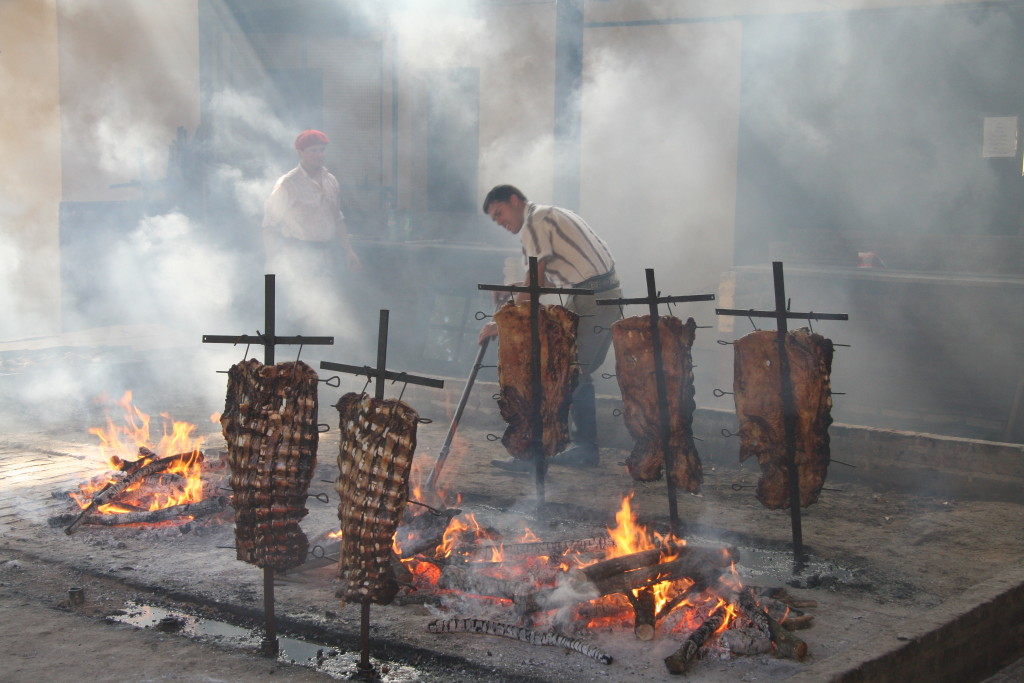
After hours of grill smoke and a parade of entrails and sausages, the main event commences. The golden rule suggests calculating one pound of meat per person, which may seem like a lot, but makes sense considering the average Argentine consumes about 190 pounds of meat per year.
Larger cuts are put on the grill first, as these big hunks can take hours to cook on low heat; thinner and smaller steaks come later. The meat is rarely marinated, just sprinkled with coarse sal parrillera (grilling salt) either right before, or once it hits the grill. When larger pieces of meat are prepared a la cruz, standing up on an iron cross, they are often doused in a salmuera, a brine of hot water, coarse salt, and herbs.
When each cut reaches the optimal level of doneness (in Argentina, there’s a general national preference for well-done meat), it is carved and distributed as ready. It’s not uncommon for the grill master to simply serve the cuts on a communal wooden board, so each eater can grab what they want with their hands or forks.
Hot tip: Ignore your Spanish dictionary because those translations on the level of beef doneness won’t help you here. If you like your steak rare, ask for it “bien jugoso” or “muuuy jugoso” – emphasis on the muy, or “vuelta y vuelta” for blue. If you like medium, order it “jugoso”, or medium-rare. “Apunto” generally comes out medium well, while “cocido” will probably take form of a dry piece of grey sadness.
ASADO // RIBS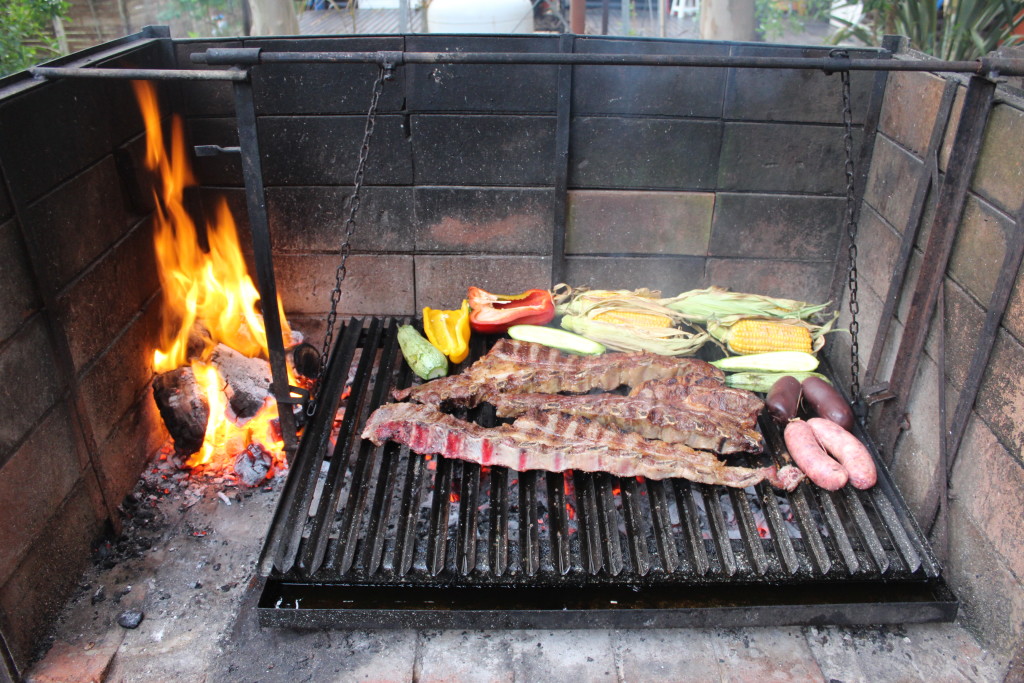
The Lowdown: Not to be confused with the actual barbecue performance, the asado refers to the short or spare ribs. Asado de tira (or tira de asado) translates to short ribs; butchers generally sell it flanken style in one long, thin strip cut crosswise against the bone. These babies, a key cut at any asado, are cooked on low heat until they achieve a crispy outer layer and slight chewiness, but still tender insides.
BIFE DE CHORIZO // SIRLOIN, NEW YORK STRIP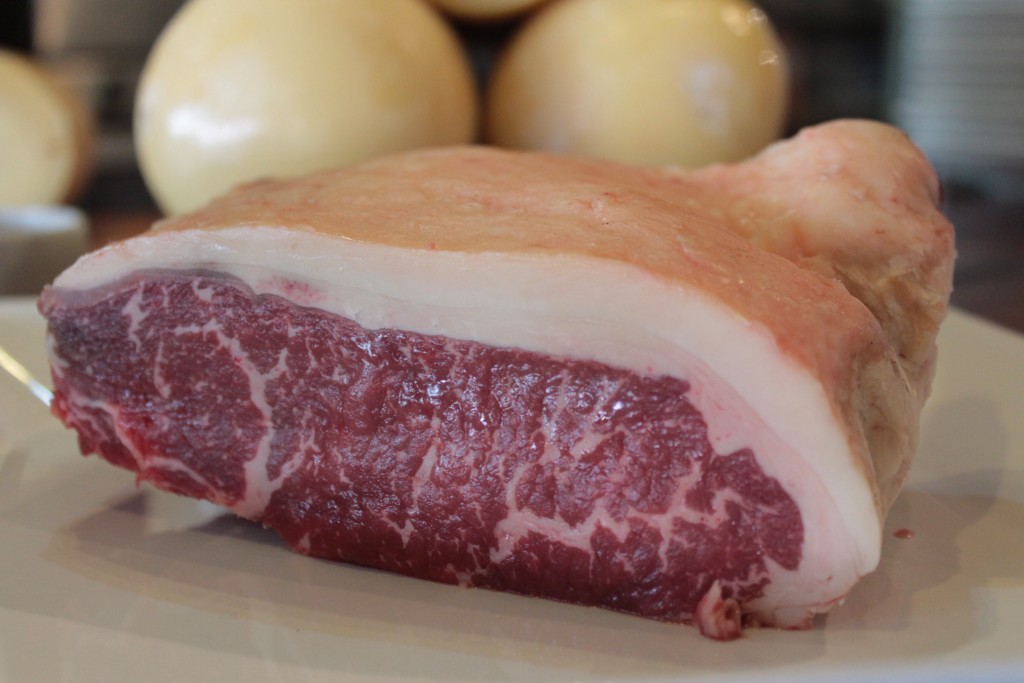
The Lowdown: In Argentina, this cut is used as a litmus test to judge the quality of a barbecue joint. Typically, the bife de chorizo is cut thick (nearly two inches, or three fingers if you’re a butcher) with a hefty surrounding layer of fat. There are several varieties of top loin: bife de chorizo angosto (“thin sirloin”) and bife de chorizo mariposa, (“butterflied sirloin”). Never make the mistake of confusing bife de chorizo with chorizo sausage; they are two very different yet equally essential asado beasts.
OJO DE BIFE // RIBEYE
The Lowdown: A favorite cut in the parrilla world, ribeye, which is also called bife ancho, is known for its succulent fat marbling and meaty flavor. It’s generally butchered without the bone and cut 1 ½- to 2-inches thick.
THE PARRILLADA // MIXED GRILL
The Lowdown: Beef-eaters who have difficulties making menu decisions, rejoice! This mixed-grill platter encompasses a little bit of everything: it’s laden with all sorts of internal organs and cuts, typically the more affordable parts, chosen by each parrillero. It’s most common to see a medley of chorizo, blood sausage, kidney, intestines, ribs, and flank steak. If you finish the parrillada all by yourself, a cow angel gets its wings.
ENTRAÑA // SKIRT STEAK
The Lowdown: You need a good set of chops to sink into this cut. Perhaps the beefiest of flavors, the earthy skirt steak comes from the diaphragm muscles of the cow stuck to the ribs, and is long and fibrous. It’s covered in a thin, chewy membrane that’s typically left intact.
VACÍO // FLANK
The Lowdown: Belly up with a big slab of grilled flank, which comes from the lower abdominal region of the cow, and is tossed on the grill in one large hunk with the fat intact. The exterior fat layer transforms into crispy gold when cooked slowly on medium heat. The cut is broken down into two parts: the thick and fibrous vacío, often served in sandwich form and then called “vaciopán”; and the fatty thin part, known as matambre, which can be grilled directly on high heat or tenderized in the oven or stovetop with milk and then grilled. It’s common to serve matambrea la pizza with tomato sauce and melted cheese, or stuffed, rolled, finished on the grill, and cut into pinwheels.
LOMO // TENDERLOIN (FILET MIGNON)
The Lowdown: The tenderloin’s mild flavor might not match the rich price tag, but the lean cut still remains a favorite go-to tender and juicy steak. Even a spoon can cut into this luscious piece of beef.
ASADOR CRIOLLO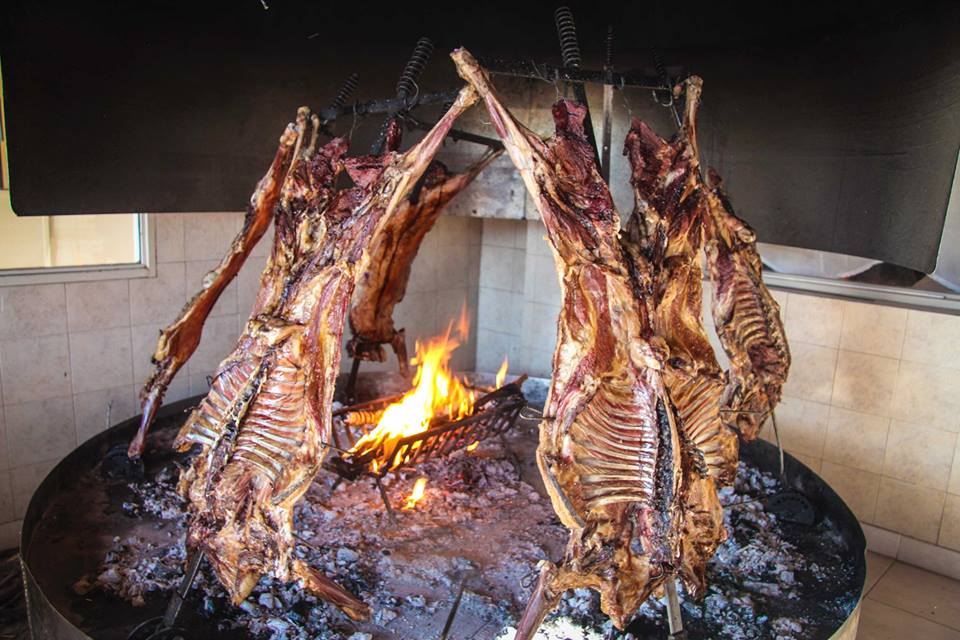
If we’re talking asado, it’s important to give a shout out to the asador criollo, which is not a cut but a popular style of barbecuing meat in Argentina. Generally, whole animals or very large cuts are cooked al asador, (also called “a la cruz”), crucified on an iron cross and perched vertically over an open fire. Many asados in the countryside feature this type of barbecue pit, and animals vary depending on the region: chivito (goat) in Mendoza, cordero (lamb) in Patagonia, and chancho, lechón, and cochinillo (pig) in the Pampas.
Other cuts that shouldn’t feel left out: cuadril (rump), colita de cuadril (tri-tip), costilla de cerdo(pork ribs), bondiola de cerdo (pork shoulder), matambre de cerdo (pork flank), and bife de costilla(T-bone steak).
¡LAS GUARNICIONES!
Sides at an asado are always an afterthought; nothing too creative that would steal attention from the real action. They’re mostly easy salads hastily thrown together with salt, vinegar, and oil.
ENSALADA MIXTA // MIXED SALAD
Simple combo of lettuce, tomato, and onion. If the salad-maker is feeling crazy, they may throw in a shredded carrot, hard-boiled egg, or even some arugula or parmesan cheese.
ENSALADA RUSA // RUSSIAN SALAD
A mayo-drenched potato salad with (often-canned) peas and carrots.
PARRILLADA DE VERDURAS // GRILLED VEGETABLES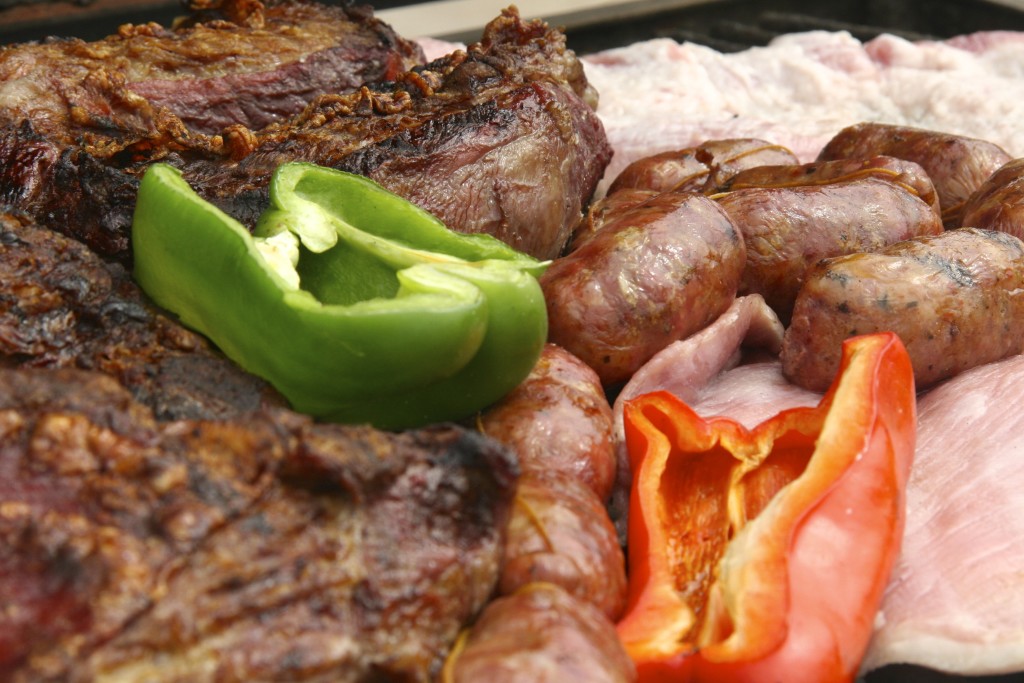
I know many vegetarians who have been asked to bring their own vegetables to an asado: in which case onions, peppers, eggplant, pumpkin, corn, and zucchini get grilled alongside the massive slabs of animal. Potatoes get wrapped in tinfoil and chucked in with the coals.
MORRONES CON HUEVO // PEPPERS WITH EGG
A common crowd-pleaser is this bell pepper, cut in half, filled with an egg, and grilled. Now we’re talking fancy.
PAN // BREAD
While this technically doesn’t count as a side dish, there’s always the generic pan miñon or francés hanging around for juice-sopping and impromptu sandwich-making.
PAPAS FRITAS // FRENCH FRIES
This wouldn’t be prepared at a home asado, but steakhouse menus will offer a whole line of different forms and shapes of papas fritas to accompany the meat.
¡THE CONDIMENTS!
CHIMICHURRI
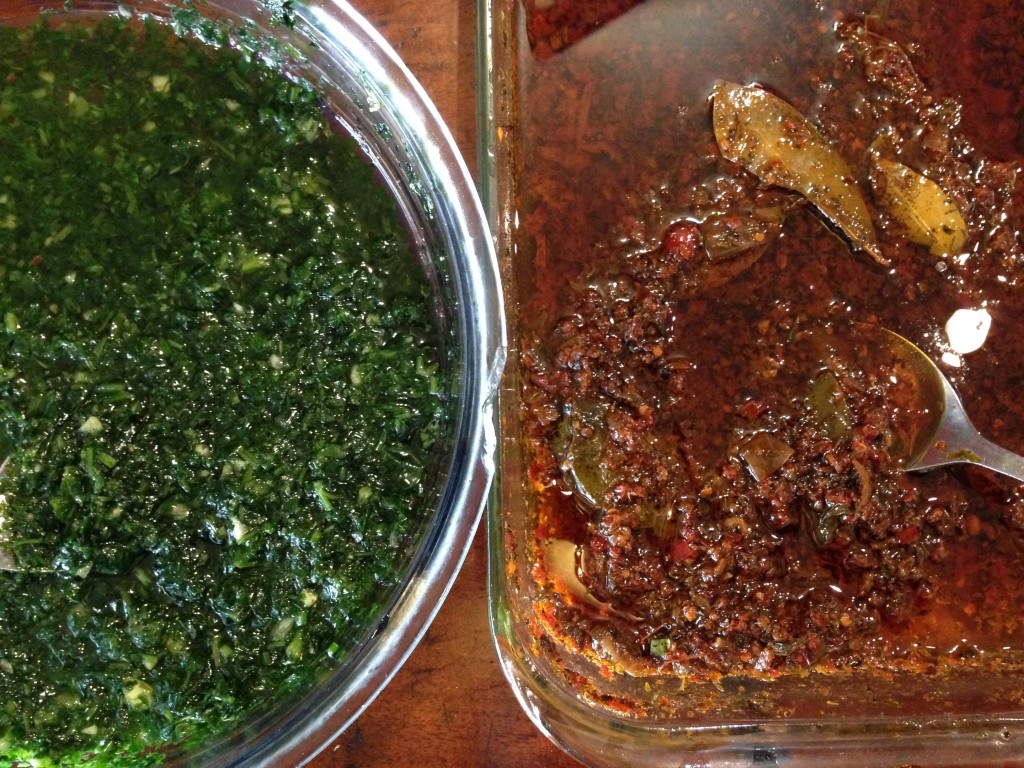
The Lowdown: It’s a common misconception that Argentines smother everything with chimichurri sauce. When you order a steak in Buenos Aires, the waiter will bring you a plate of naked steak—it doesn’t hide behind a sauce or condiments. That said, chimichurri is generally placed on the table for moderate communal use and bread sopping. There’s no one way to make the herbaceous side sauce, but many recipes also call for dried seasonings like ground red pepper, garlic, paprika, oregano, parsley, onion, and a neutral oil and vinegar.
Fun fact: As a general rule, most Argentines don’t like spicy foods, and often confuse spice (heat) with spices and herbs. Most chimichurri recipes are made with ají molido, a ground red pepper that lacks any heat, although some still refer to it as picante (spicy). If you are served a bright green sauce to accompany the meat, it is probably salsa provenzal, a mixture of garlic and parsley often interchanged with chimichurri.
SALSA CRIOLLA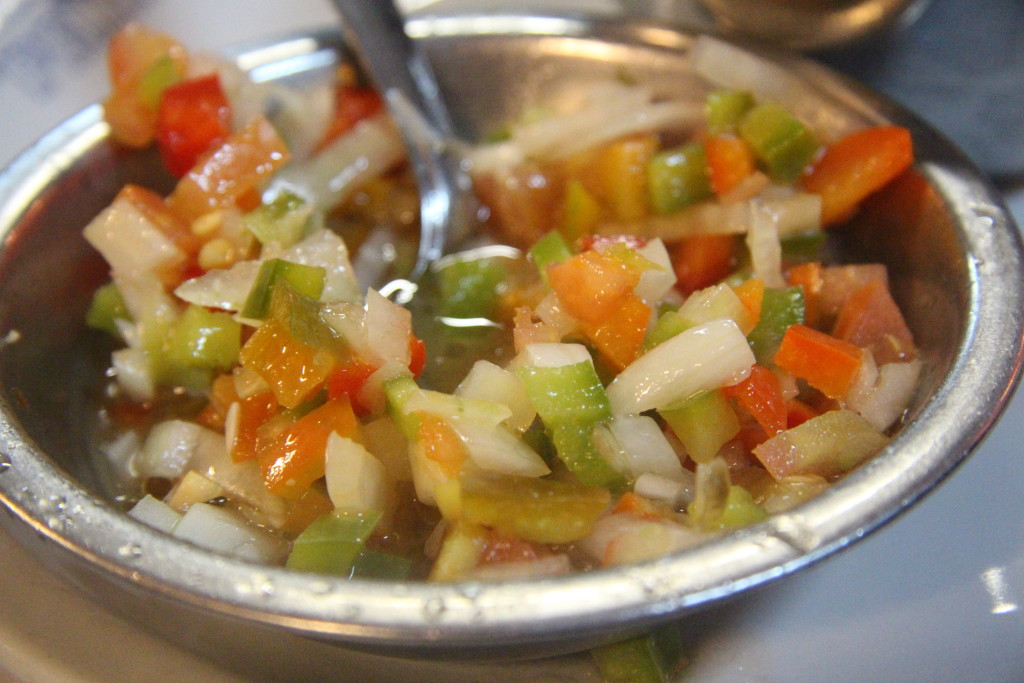
The Lowdown: It’s the Argentine pico de gallo, served alongside chimichurri at an asado. Just like any sauce, the recipe varies, but the essential ingredients call for a fresh medley of chopped onions, red and/or green peppers, tomatoes, vinegar, and oil.
Looking for the best steak in Argentina? Check out this article on some of my favorite parrillas in Buenos Aires.

[…] In Argentina, a barbecue or “Asado” is not just a way of cooking meat; it is an art form. Every chef has his own personal secret when it comes to arming the parrilla (grill), whether it is the heat of the fire, the ratio of coal to wood, or at what moment they turn the meat over. I was fast discovering that grilled meat is part of the Argentine national identity. (A guide to Argentine Asado) […]